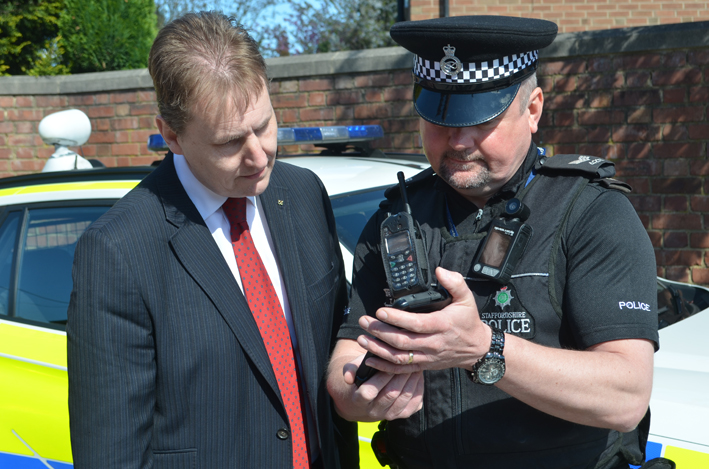BWV reaches for the cloud
A senior cloud storage systems engineer has warned that while the use of body-worn video (BWV) cameras has been proven to give dramatic reductions in use-of-force and complaints against police officers, in order for BWV cameras to deliver on their full potential, local law enforcement agencies must grapple with a substantial increase in the amount of video footage that needs to be processed, stored and accessed for both internal and external use.

A senior cloud storage systems engineer has warned that while the use of body-worn video (BWV) cameras has been proven to give dramatic reductions in use-of-force and complaints against police officers, in order for BWV cameras to deliver on their full potential, local law enforcement agencies must grapple with a substantial increase in the amount of video footage that needs to be processed, stored and accessed for both internal and external use.
The challenge comes down to data storage, explained Raj Rana, senior manager, systems engineering, at data management and cloud storage specialist NetApp. Who will be responsible for downloading the video? How will it be stored and for how long? What about its use in criminal proceedings will it be accepted in a court trial? Will it be considered physical evidence and require chain-of-custody handling or other special types of controls? Every law enforcement agency needs to carefully consider how they will use this footage and how they will store and protect it.
In 2007, the Home Office Scientific Development Branch published a paper giving guidance on the storage, replay, and disposal of digital evidential images.
The flowchart shows how from the point of generation of video by an officer, the recommended process that be followed largely unchanged since, said Mr Rana, writing in an industry insight, Arresting the storage challenges of body cameras, for the US-based public sector technology support specialist GCN. Most importantly, however, research and planning is key to a successful BWV project, especially in terms of storage after the fact.
Mr Rana says once the video files have been retrieved from the camera and downloaded into the storage system, consideration must to given to how to store all of the additional video data: Most daily footage will be non-evidentiary videos that will play no part in an investigation or prosecution. Videos from these encounters, such as aiding a stranded motorist, will not require long-term storage, making it a good candidate for cloud storage.
Many agencies may also assign a shorter storage retention time for such videos the most common retention time for non-evidentiary video is between 60 to 90 days also significantly reducing data storage costs.
However, he added that evidentiary footage will need to be stored for longer and it will often have to adhere to more stringent regulations affecting access, making on-premises storage a more viable option.
These evidentiary videos should be separated according to the seriousness of the crime, said Mr Rana. The videos surrounding minor infractions, such as routine traffic tickets, would not have to be retained as long as the video from more serious incidents, such as a homicide. This variation in on-premises retention times equates to significant cost differentials.
Taser Internationals cloud-based EVIDENCE.com platform, for example, helps police capture, manage and share their digital evidence without the complexity or cost of installing in-house servers.
Agencies moving toward body cameras need to take all of these considerations into account before they implement their new video requirements. If done properly, they will be saving time and money as well as a large number of headaches, added Mr Rana.
Storage challenges
Stuart McKee, chief technology officer for state and local government at Microsoft, agrees that if video is not properly stored, managed or disclosed, its value to the investigation can be compromised, which in turn can have devastating consequences for the people involved in the case.
In an industry perspective for US-based Government Technology, Is the cloud ready for body-cam video?, he says whether the cameras are being used to monitor police behaviour, respond to the concerns of citizen groups, or follow the directives of local officials, the digital video data that is collected must be carefully handled.
The volume of data presents its own unique storage challenges from both a space and a


